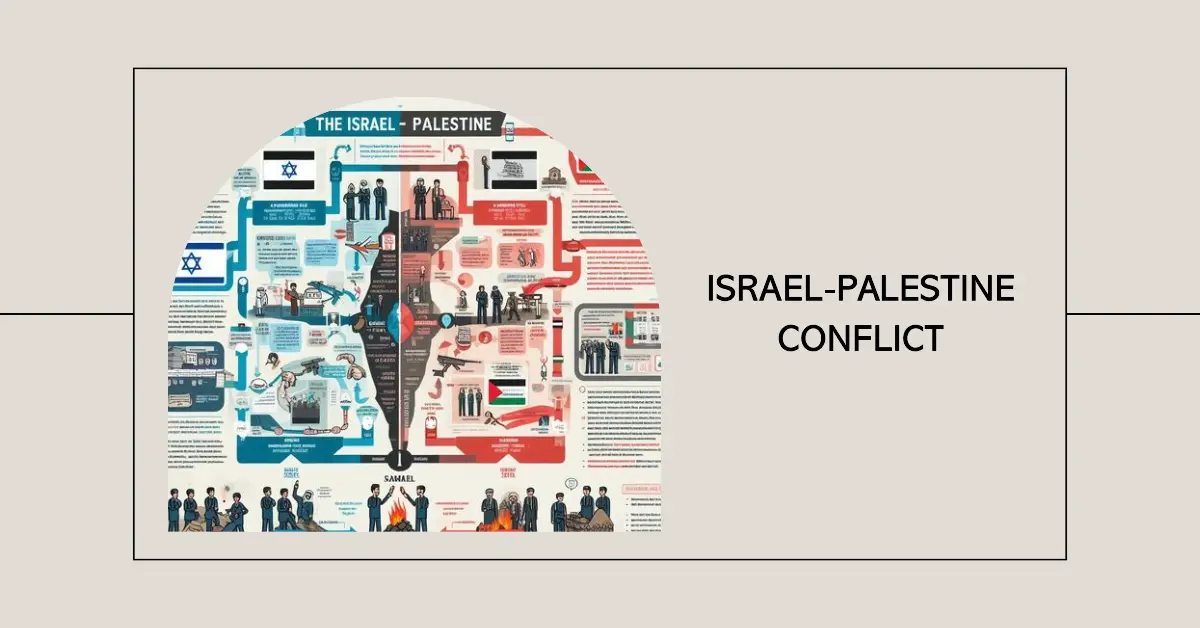Israel-Palestine Conflict: A Comprehensive Overview
Introduction
The Israel-Palestine conflict is a deeply rooted and multifaceted issue that has spanned over a century, making it one of the most intricate and enduring conflicts in modern history. The conflict’s origins can be traced back to the late 19th and early 20th centuries when both Jewish and Arab nationalistic movements emerged in the Middle East, each laying claim to the same land as their ancestral homeland. In this comprehensive article, we will delve into the historical, political, and social factors that have played a pivotal role in shaping this conflict, from its inception to the present day.
The Origins of Zionism and Arab Nationalism
Zionism: A Quest for a Jewish Homeland
Zionism, a term coined by Nathan Birnbaum in 1885, represents the movement supporting the establishment of a Jewish state in the historic land of Israel, which is also known as Palestine. The concept gained momentum with the publication of Theodor Herzl’s influential work, “The Jewish State,” in 1896. Herzl envisioned a modern Jewish nation as a solution to the persecution and discrimination faced by Jews in Europe and around the world.
Arab Nationalism: The Drive for Unity
Arab nationalism emerged as a response to the decline of the Ottoman Empire and the exploitative European colonialism that had fragmented and oppressed Arab lands. The term was first used by George Antonius in his 1938 book, “The Arab Awakening.” It aimed to unify the Arab people under a single political and cultural identity, rooted in their shared language, religion, history, and culture.
The Rise of Jewish Immigration and Arab Resistance
Early Jewish Immigration to Palestine
The initial wave of Jewish immigration to Palestine began in 1882 when Eastern European Jews, fleeing persecution and poverty, settled in agricultural colonies supported by benefactors like Baron Edmond de Rothschild. By 1914, the Jewish population in Palestine had reached approximately 85,000, coexisting with around 600,000 Arabs.
Arab Resistance to Jewish Immigration
The Arab population in Palestine, predominantly rural and traditional, regarded Jewish immigrants as foreign invaders posing a threat to their land, livelihoods, and identity. They also harbored resentment towards the British government, which had initially promised to support Arab independence from the Ottomans during World War I but later issued the Balfour Declaration in 1917, expressing support for “the establishment in Palestine of a national home for the Jewish people.”
The British Mandate and the Partition Plan
The British Mandate Era
Following World War I, Palestine came under British Mandate, where Britain governed on behalf of the League of Nations. The British faced mounting challenges from both Jewish and Arab communities, each with conflicting aspirations and demands. Jewish immigrants sought increased immigration and land acquisition, while the Arabs pressed for more political rights and self-determination. Tensions escalated, leading to violent clashes between the two groups and against British authorities. Notable episodes include the Arab Revolt of 1936-1939 and the Jewish insurgency of 1944-1947.
The UN Partition Plan
In 1947, as a solution to the escalating conflict, Britain turned to the United Nations. The UN proposed a partition plan dividing Palestine into two states: one Jewish and one Arab, with Jerusalem as an international city. On November 29, 1947, the plan was approved by a majority vote in the UN General Assembly.
While the Jews accepted the plan, the Arab nations rejected it. They argued that it was unfair to allocate more than half of Palestine to a Jewish minority, which owned less than 7% of the land. Moreover, they feared that a Jewish state would lead to the displacement and discrimination of the Arab population living within its borders.
The War of 1948 and the Nakba
Outbreak of War
The UN’s partition plan set off a civil war between Jews and Arabs in Palestine, eventually escalating into a regional conflict when Israel declared its independence on May 14, 1948. Egypt, Syria, Jordan, Lebanon, and Iraq, neighboring Arab states, joined the fray with the goal of destroying Israel and restoring Palestinian sovereignty.
Resolution through Armistice
The war continued until 1949 when armistice agreements were signed between Israel and its Arab adversaries. Israel emerged victorious from this conflict, establishing its sovereignty over a significant portion of the territory. However, this victory came at a significant cost to the Palestinian Arab population, resulting in what they refer to as the “Nakba,” or “catastrophe.” The Nakba marked the displacement and expulsion of hundreds of thousands of Palestinian Arabs from their homes and the loss of their land and livelihoods.
Continuing Conflict
The establishment of Israel in 1948 did not bring an end to the Israel-Palestine conflict; instead, it marked the beginning of a protracted struggle that has continued to this day. The conflict has gone through various phases, involving multiple wars, negotiations, and international mediation efforts, all with the aim of achieving a lasting resolution and peace in the region.
The Occupation and Ongoing Conflict
Occupation of Palestinian Territories
Following the 1967 Six-Day War, Israel occupied the West Bank, Gaza Strip, East Jerusalem, and the Golan Heights. This occupation remains a central point of contention in the conflict, with Palestinians seeking self-determination and the establishment of an independent Palestinian state.
Peace Efforts and Roadblocks
Numerous attempts have been made to broker peace between Israel and the Palestinians, including the Oslo Accords in the 1990s and the Camp David Summit in 2000. These efforts, however, have faced significant challenges and have yet to result in a comprehensive and lasting peace agreement.
The Gaza Strip and West Bank
Gaza Strip: A Focus of Conflict
The Gaza Strip, a densely populated enclave along the Mediterranean coast, has been a focal point of conflict in recent years. Controlled by the Palestinian group Hamas, Gaza has faced Israeli military offensives and blockades, resulting in a humanitarian crisis that has garnered international attention.
West Bank: Settlements and Disputes
The West Bank, home to a significant Palestinian population, is marked by Israeli settlements considered illegal under international law. These settlements have been a major obstacle to peace negotiations, as they complicate the establishment of a contiguous Palestinian state.
Jerusalem: A City of Contention
Jerusalem holds immense religious and cultural significance for both Israelis and Palestinians. The city’s status remains a contentious issue, with Israel considering it its undivided capital, while Palestinians aspire to establish East Jerusalem as the capital of their future state.
Recent Developments and Prospects for Peace
Abraham Accords
In 2020, Israel signed normalization agreements with several Arab nations, collectively known as the Abraham Accords. While these agreements marked a historic shift in regional dynamics, they did not address the core issues of the Israel-Palestine conflict.
Prospects for the Future
The Israel-Palestine conflict continues to be a deeply rooted and highly sensitive issue with no easy solutions. The path to peace remains challenging, but various diplomatic initiatives, international mediation efforts, and grassroots movements persist in seeking a resolution that can provide security and self-determination for both Israelis and Palestinians.
Conclusion
In conclusion, the Israel-Palestine conflict is a complex and long-standing issue that has deep historical roots and continues to
shape the geopolitics of the Middle East. Understanding the origins, historical developments, and ongoing challenges of this conflict is essential for anyone interested in current affairs in the region. While the path to a lasting resolution remains fraught with obstacles, the pursuit of peace and justice remains a fundamental goal for all parties involved.



